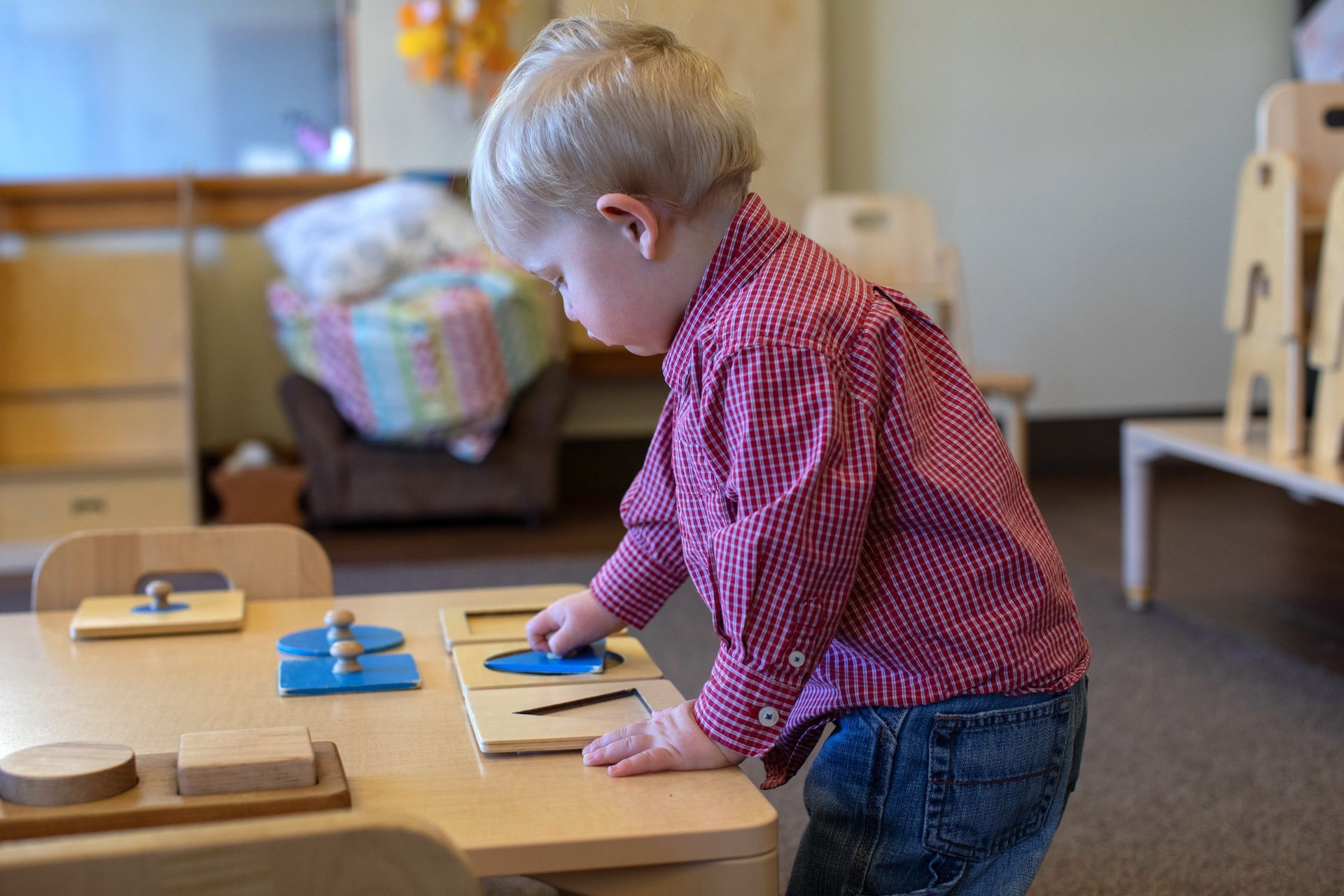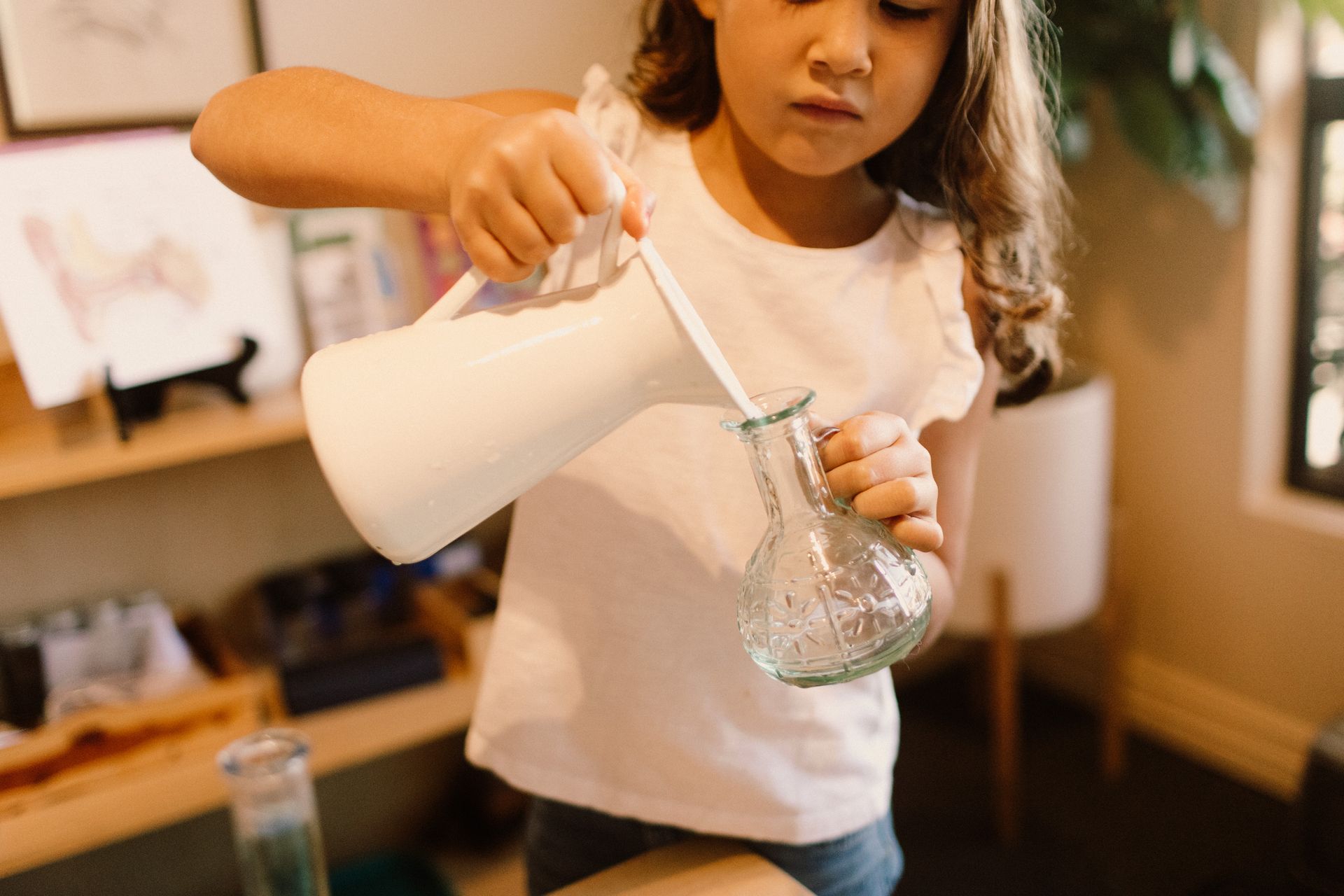
Unlike other species that are born with a predetermined set of behaviors, human babies are born with a set of potentials. When a child is born, we have no idea if they will be a master musician or a creative chef. It’s pretty amazing when we think about it! Children are constantly creating the skills they need to become contributing adults.
Dr. Maria Montessori observed children from a scientific lens and over time she concluded that this kind of creative work could only happen with a mind that was different from the conscious adult mind. She realized that children’s minds operate in a fundamentally different way. In The Absorbent Mind, Dr. Montessori states:
“The child has other powers than ours, and the creation he achieves is no small one; it is everything. Not only does he create his language, but he shapes the organs that enable him to frame the words. He has to make the physical basis of every moment, all the elements of our intellect, everything the human being is blessed with. This wonderful work is not the product of conscious intention.”
Well before brain scans, Dr. Montessori discovered so much about how children’s brains function and she termed this special mental functioning, the absorbent mind. Her book, The Absorbent Mind, was one of the last books she compiled.
The words Dr. Montessori used to describe the child’s absorbent mind were chosen deliberately. The word absorbent implies “taking in” and integrating into the whole. What is absorbed becomes a part of what is doing the absorbing. Children take in their experiences and impressions which become part of the structure and content of their brains.
“Impressions do not merely enter his mind; they form it. They incarnate themselves in him. The child creates his own ‘mental muscles,’ using for this what he finds in the world about him. We have named this type of mentality, The Absorbent Mind.”
The absorbent mind is a superpower of children from birth to around age six.
Because children under six are absorbing everything in their environment, our actions need to reflect what we expect. If we want children to sit at the table to eat, we need to sit at the table to eat. If we want children to talk with quiet, calm voices, we need to talk with quiet, calm voices. If we want children to carry one item at a time, using both hands, we need to do so, too. The key is to model this behavior at all times. Children are absorbing indiscriminately. We may not think they are looking, but they are taking it all in!
We can share an example of this from a Montessori classroom. Once upon a time, a tall toddler teacher would always squat down in front of the low shelves to select a material to show a child. After squatting down, she would pick up the item she wanted to show. Although all the toddlers were at the right height to easily take the item, the teacher noticed that they would walk to a shelf, squat down, and then pick up the material. Even though this movement was much more difficult for the toddlers, they had unconsciously absorbed the steps the teacher had demonstrated: walk to the shelf, squat down, and pick up what you want.
So in our Montessori environments, we are very careful with how we move and what we do. When the adults want a snack, we follow the same procedure as the children. We wash our hands, use a plate, and sit at the snack table. Doing what we expect the children to do also gives us a wonderful opportunity to see how the process can be improved. By having snack and cleaning up after ourselves, we can experience the process. Are the dustpans easy to access and in a place that makes sense? Do the spray bottles work well for spraying and wiping the table? What parts of the process feel cumbersome? What flows well?
We can also look at our school and home environments from our children’s perspective. Sometimes it helps to even kneel or sit on the floor and look at a room from a child’s height. What do they see? What stands out from their vantage point? Is the space welcoming and beautiful? What attracts attention?
Our young children’s brains are hardwired to effortlessly absorb what is around them. Because our children are full of potential, we want to provide them with the best! Let’s start by taking a look at ourselves and our children’s surroundings. As we think about our children’s absorbent minds, we can work to provide them with clear, consistent images as we move through our days.
If you would like to learn more, please schedule a tour. We love to share how we support children as they are discovering what is possible!


